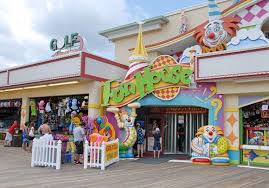Rise of Sustainable Fashion in the Media
Youth culture created a new system of fashion that can help save the environment, while simultaneously expressing their creativity and individuality.

Psychic Outlaw Designs
February 25, 2022
Social media has always influenced clothing, but the level of impact has skyrocketed since the beginning of the pandemic. Thanks to influencers, hashtags, and a growing number of users, new style trends have been spreading like wildfire.
One of the biggest up-and-coming trends is upcycling: the creative reuse of discarded fabric. #Upcycle on Tiktok has over 5.9 billion views, and #Thrift has over 4.4 billion. This growing trend left a mark on the fashion industry, changing how people see clothing. It’s also making people more environmentally conscious and less wasteful.
Upcycling helps the fashion industry save the environment through landfill and pollution reduction by redirecting waste towards better use. It preserves natural resources like water because the same materials are used multiple times.
The fashion industry is one of the main contributors to environmental pollution, and this issue has only grown in the last decade. The industry uses an excessive amount of water to run factories and clean products. According to worldwildlife.org, it takes a whopping 2,700 liters of water to make a single cotton shirt. Factories turn towards cheaper materials that cause plastic microfibers to end up in marine ecosystems. Half a million metric tons of these microfibers are dumped into the ocean yearly.
The International Panel on Climate Change (IPCC) has calculated that the fashion industry is also responsible for 10% of all carbon emissions. The root of these problems is the excessive production of clothing generated to meet consumer demand.
Fast fashion is cheap, low-quality clothing produced rapidly by mass-market retailers. In addition to causing devastating damage to the environment, it’s incredibly inhumane and unethical. Textile workers are primarily women in developing countries and are paid shockingly low wages for long and strenuous hours. These people work under terrible conditions, and many factories violate human rights. The use of chemicals in some clothes also poses many health risks for workers in factories and consumers. Sustainability is necessary to combat these issues. This means we must use natural resources in a way that we can keep doing for a long time.
Although thrifting and upcycling clothing has been around for decades, it’s recently popularized on various social media. Incredibly, the secondhand market is projected to nearly double the size of fast fashion in 2029. Tiktok most noticeably has given activists, designers, and even consumers a platform to share their creativity and passion for sustainable fashion. You can find millions of videos showing fun, crafty upcycling projects and thrift store hauls and tips. An example is turning old bedsheets into beautiful puff-sleeved, floral dresses, sewing together pieces of leftover fabric to make a patchwork top, even using recyclable yarn to crochet purses.
Portraying upcycling in this way makes it easily accessible, available to the public, and a way to express individuality. You’ll also notice an endless stream of videos about climate change and environmental issues. Many users call out unsustainable fashion brands and corporations while spreading awareness. Tiktok is paving the way to sustainable fashion, starting with youth culture and expanding to new, up-and-coming entrepreneurs, fashion brands, and influencers.
Inspired by spreading trends and environmental awareness, some of Gen Z is taking matters into their own hands by starting sustainable businesses. Depop, a fashion marketplace app, is chock full of vintage, thrifted, and upcycled pieces. According to the company, the seller community turned over $650 million in secondhand and own-brand items in 2020. People can showcase their creative new designs and upcycled pieces, expressing their individuality, while simultaneously saving the environment through sustainable fashion and business practices.
General knowledge of the environment and the fashion industry is becoming more widespread. Consumers have been pushing and seeking out more sustainable choices, causing upcycling to reach luxury brands. Some luxury brands burned or disposed of their unsold clothing to protect its value. Public outrage and new laws now prevent such practices.
Today, many brands fully embrace upcycling. A few of the most influential ones include Balenciaga, Marni, Coach, and Miu Miu (a sister brand of Prada.) Since popular brands are releasing upcycled clothing lines, a chain reaction has occurred, and upcycling is spreading to more and more brands. Influencers wear these upcycled products, posting pictures or videos to millions or even billions of followers.

It seems that upcycling is more than just a trend, and will likely stick with more and more brands, some even releasing entire lines of upcycled garments. It’s incredible how a generation of young people can form long-lasting trends and leave their mark on the industry and the world in such a positive way. Upcycling has taken root in the fashion world and is here to stay.






